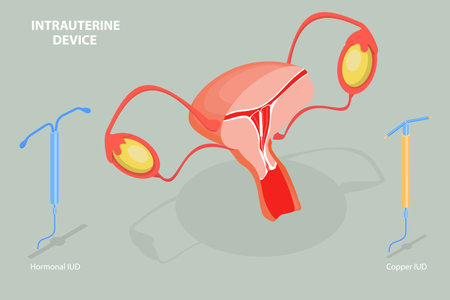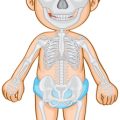Recognizing the Risks: What Leads to Secondary Heart Events
After experiencing a heart attack or other major cardiac event, many Americans wonder what comes next and how to avoid another scare. The risk of a second heart event is real, but understanding what puts you at risk is the first step toward prevention. Let’s break down some of the most common factors that can lead to secondary heart events, with a special focus on everyday challenges people in the United States may face.
Lifestyle Habits That Increase Risk
Everyday choices play a big role in heart health. Some habits are especially common in the U.S. and can increase your risk of another cardiac incident:
| Lifestyle Habit | How It Affects Your Heart | Examples |
|---|---|---|
| Poor Diet | High cholesterol, high blood pressure, weight gain | Fast food, sugary drinks, processed snacks |
| Physical Inactivity | Weakens heart muscle, increases obesity risk | Sedentary jobs, little exercise during leisure time |
| Smoking/Vaping | Damages blood vessels, raises blood pressure | Cigarettes, e-cigarettes (vapes) |
| Excessive Alcohol Use | Raises blood pressure, adds empty calories | Binge drinking, frequent happy hours |
| Poor Stress Management | Triggers unhealthy behaviors, raises blood pressure | Skipping breaks at work, lack of relaxation time |
Medical Conditions That Raise Your Chances
Certain health problems are common among American adults and make a second heart event more likely:
- High Blood Pressure (Hypertension): Uncontrolled high blood pressure damages arteries over time.
- High Cholesterol: Too much “bad” LDL cholesterol can clog arteries.
- Diabetes: High blood sugar harms blood vessels and nerves controlling your heart.
- Obesity: Excess weight puts extra strain on your heart and can make other conditions worse.
- Kidney Disease: Damaged kidneys can’t filter waste properly, increasing heart risk.
- Depression and Anxiety: Mental health struggles often lead to unhealthy coping habits.
The Role of Genetics and Family History
If close family members had heart problems—especially at a young age—you might be at higher risk yourself. While you cant change your genes, knowing your family history helps you and your healthcare team take smarter steps for prevention.
The Unique American Experience After a Heart Event
Navigating life after a cardiac event often comes with specific American challenges like juggling medical bills, dealing with insurance companies, balancing work responsibilities, and finding affordable healthy food options. These hurdles can make it tough to stick with recommended changes or follow up regularly with doctors.
Understanding these risks is key to building a personalized plan that works for you. In the next section, we’ll explore practical strategies for lowering your chances of a secondary heart event and highlight helpful resources available across the U.S.
2. Lifestyle Modifications for Heart Health
Why Lifestyle Changes Matter
If youve experienced a heart event, making healthy changes to your daily habits is one of the most effective ways to reduce your risk of another incident. Evidence shows that choices about what you eat, how active you are, and how you handle stress can make a big difference in your heart health.
Heart-Healthy Eating: American Tips & Resources
You don’t need a complicated diet plan—small changes can add up! Focus on whole grains, fresh fruits and vegetables, lean proteins (like fish and chicken), and healthy fats such as those found in nuts and avocados. Try to cut down on processed foods, salt, and sugary drinks.
| What to Eat More Of | Easy American Examples |
|---|---|
| Fruits & Veggies | Add berries to your cereal; include a side salad at lunch or dinner |
| Whole Grains | Choose whole-wheat bread or brown rice instead of white versions |
| Lean Proteins | Grill chicken breast; try baked salmon or plant-based options like beans |
| Healthy Fats | Snack on almonds; use olive oil in cooking instead of butter |
If you need guidance, the American Heart Association’s Eat Smart resources offer recipes and shopping tips tailored for U.S. families.
Exercise: Get Moving, Stay Safe
Regular physical activity strengthens your heart and helps control weight, blood pressure, and cholesterol. Aim for at least 150 minutes per week of moderate exercise—like brisk walking, biking, swimming, or even gardening. If youre new to exercise or have concerns after your heart event, check with your doctor before starting something new.
Simple Ways to Fit in Exercise:
- Take a walk after dinner with family or friends
- Try free online workout videos designed for beginners or seniors
- Join a local YMCA or community center—they often have heart-safe fitness classes
- Use a step counter to motivate yourself (many smartphones track steps automatically)
Managing Stress the American Way
Stress can take a toll on your heart health. Finding ways to relax is important—whether it’s through faith communities, meditation apps like Calm or Headspace, spending time in nature, or connecting with supportive groups online or in person.
Popular Stress-Reducing Activities:
- Meditation or deep breathing exercises (try YouTube tutorials)
- Tai Chi or gentle yoga classes at local parks or studios
- Pursuing hobbies: reading, knitting, fishing, gardening—anything that helps you unwind!
- Tapping into support groups through organizations like Mended Hearts (mendedhearts.org) or local hospitals.
Your Local Resources Matter
The United States offers many resources for people recovering from heart events. Check out your local hospital’s cardiac rehab program, join community wellness classes at libraries or senior centers, and explore national websites like the CDC Heart Disease Prevention page. These supports can help you stick to healthy habits and connect with others who understand what you’re going through.

3. Medication Management and Adherence
Why Taking Your Medications as Prescribed Matters
If you have already experienced a heart event, following your medication plan is one of the most important steps you can take to prevent another one. Heart medications help control blood pressure, cholesterol, and other risk factors. Skipping doses or stopping your medicine on your own can raise your risk for another heart problem.
Common Reasons People Miss Their Medications
| Reason | How to Overcome It |
|---|---|
| Forgetting to take it | Set phone alarms or use a pill organizer |
| Side effects | Talk to your doctor about alternatives or adjustments |
| Cost concerns | See below for cost-saving tips and resources |
| Unclear instructions | Ask your pharmacist or doctor for clarification |
Navigating Prescription Costs and Insurance in the U.S.
The cost of medications can be a big concern for many people. In the United States, insurance plans vary widely in what they cover and how much you pay out-of-pocket. Here are some practical tips to help manage these costs:
Tips for Managing Medication Costs:
- Check Your Insurance Formulary: Ask your provider or pharmacist if your medication is on your insurance plan’s preferred drug list.
- Ask About Generics: Generic versions work the same as brand-name drugs but usually cost less.
- Pharmacy Discount Programs: Many pharmacies offer discount cards or savings programs—ask about them when you fill your prescription.
- Manufacturer Assistance: Some drug companies offer coupons or patient assistance programs for those who qualify.
- State and Federal Help: Look into programs like Medicaid, Medicare Part D Extra Help, or state pharmaceutical assistance programs.
Effective Communication with Your Healthcare Providers
Your healthcare team wants to help you succeed in preventing another heart event. Good communication can make a big difference. Here’s how to keep the conversation open and helpful:
- Bring a List: Write down all your medications (including over-the-counter) and bring it to appointments.
- Ask Questions: If you’re unsure why you need a medicine or how to take it, don’t hesitate to ask. No question is too small!
- Mention Side Effects: Let your provider know about any side effects so they can help find solutions that work for you.
- Trouble Paying? Tell your doctor if paying for medication is difficult—they may have suggestions or samples.
- Use Patient Portals: Many clinics offer online portals where you can message providers, request refills, and see test results.
Taking charge of your medication routine is key for long-term heart health. With the right strategies and support, managing medicines can become a manageable part of daily life.
4. Utilizing Community and National Resources
When it comes to preventing secondary heart events, you don’t have to do it alone. Across the United States, there are many community programs, support groups, rehabilitation services, and national organizations ready to help you stay on track with your heart health. Let’s explore some of these valuable resources that offer support, education, and practical tools for ongoing prevention.
Community Programs and Support Groups
Local communities often offer programs designed to help people manage their heart health after a cardiac event. These can include group exercise classes, nutrition workshops, and peer support groups where you can share experiences and tips with others who understand what you’re going through.
| Resource Type | Description | How to Find |
|---|---|---|
| Community Health Centers | Offer screenings, counseling, and follow-up care tailored for heart disease patients. | Search online or visit your city/county health department website. |
| Support Groups | Provide emotional support and guidance from peers who have experienced similar heart events. | Ask your doctor or check hospital bulletin boards and local libraries. |
| Cardiac Rehab Programs | Structured programs including exercise, education, and counseling to help recovery. | Available at many hospitals—ask your healthcare provider for a referral. |
National Organizations Supporting Heart Health
There are also well-known national organizations that provide up-to-date information, educational resources, and sometimes even free or low-cost tools to help prevent another heart event. Here are a few key organizations:
- American Heart Association (AHA): Offers patient education materials, local events like Heart Walks, online communities, and guidelines for managing risk factors.
- Mended Hearts: Focuses on providing peer-to-peer support for heart patients through meetings and outreach programs across the country.
- The Centers for Disease Control and Prevention (CDC): Shares reliable prevention strategies, statistics, and access to public health campaigns targeting heart disease prevention.
- The National Institutes of Health (NIH): Provides research-based information and connects people to clinical trials focused on cardiac recovery and prevention.
How These Resources Help You Stay Healthy
The right support can make it easier to keep up with lifestyle changes like eating healthier, staying active, taking medications as prescribed, and managing stress. Many resources offer apps or online trackers so you can monitor your progress at home. Some organizations even provide free newsletters with healthy recipes or reminders about upcoming community events near you.
Taking the Next Step
If you’re unsure where to start, talk to your healthcare team about which local programs or national organizations might be the best fit for you. They can recommend options that match your interests and needs—making it easier to take charge of your heart health every day.
5. Creating a Personalized Prevention Plan
Work With Your Healthcare Team
Your journey to preventing another heart event starts with building a strong partnership with your healthcare team. In the U.S., this often includes your primary care provider, cardiologist, nurses, and sometimes a dietitian or physical therapist. Don’t hesitate to ask questions and share your concerns—they are there to help you create a plan that fits your lifestyle and needs.
Set Achievable Goals Together
Setting realistic goals is key for long-term success. Here’s an example of how you and your healthcare team can break down big goals into smaller, manageable steps:
| Goal Area | Example Goal | Practical Step |
|---|---|---|
| Physical Activity | Walk 150 minutes per week | Start with 10-minute walks after dinner, 5 days a week |
| Healthy Eating | Eat more fruits and vegetables | Add one serving of veggies to lunch and dinner each day |
| Medication Management | Take meds as prescribed | Use a pill organizer or phone reminder app |
| Stress Reduction | Lower daily stress levels | Try 5 minutes of deep breathing exercises every morning |
Monitor Your Progress Regularly
Tracking your progress helps you stay motivated and spot any issues early. Many Americans use health apps, smart watches, or simple journals to keep tabs on their activity, blood pressure, weight, or food choices. Share this info at your check-ups so your healthcare team can adjust your plan if needed.
Easy Ways to Track Your Health:
- Use a fitness tracker (like Fitbit or Apple Watch)
- Download free apps like MyFitnessPal for nutrition tracking
- Keep a paper log for blood pressure or glucose readings
- Set calendar reminders for medications and appointments
Involve Family and Caregivers in Heart Health
Your family and caregivers play an important role in supporting your recovery and prevention efforts. In American culture, it’s common to ask loved ones to join you for healthy meals, walks around the neighborhood, or even attend doctor visits for extra support. Share your goals with them—having someone in your corner makes sticking to new habits much easier.
Tips for Getting Loved Ones Involved:
- Invite family members to prepare heart-healthy recipes together at home.
- Ask a friend or spouse to be your walking buddy.
- Encourage open conversations about how you’re feeling physically and emotionally.
- If needed, bring someone along when meeting with your doctor to help remember instructions.
A personalized prevention plan is not “one size fits all.” Work closely with your care team and loved ones to adjust as life changes—you’ll build confidence while protecting your heart health every step of the way.


